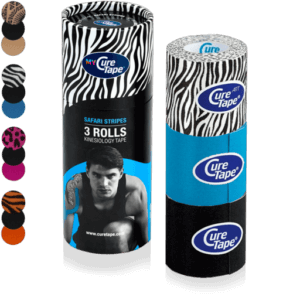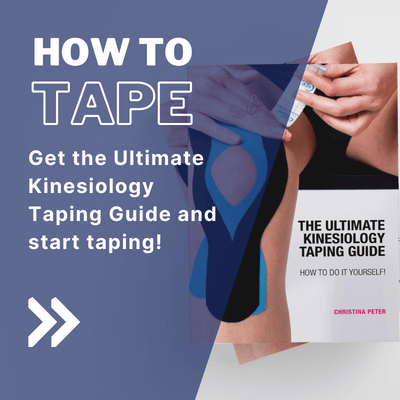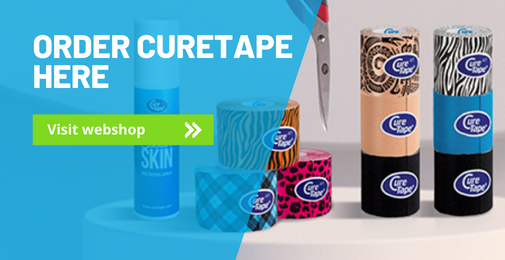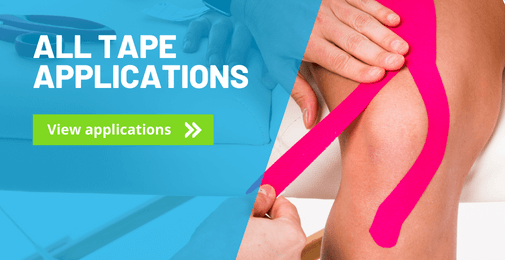Want to know how to tape for shoulder complaints? Keep on reading on this page and you will learn how to do it all yourself!
The large shoulder muscle – deltoid – is a very compact muscle. It gives the shoulder its outer contours and support. The muscle enables you to lift your arms and move them in all directions. There is often a pain point in the middle part of the muscle. If you have complaints in the area of the upper arm and shoulder joint, applying the following taping will have a relaxing and pain-relieving effect.
How to tape your shoulder
Tips for a good shoulder tape application:
- Is the cause of the complaint or pain clear?
- Check if there any contraindications for not taping.
- Before you start taping, carefully read the instructions.
- Choose a colour of tape, any colour that fits your mood!
- Round of all the edges to prevent peeling.
- Do not stretch the tape at the beginning and the end.
- Rub the tape well for adhesion. Heat activates the adhesive layer.
- Showering or swimming is possible, pat the tape dry after it gets wet. Do not rub it hard.
- It is easier to remove the tape with body or massage oil.

Christina’s advice when taping your shoulder
In the self-taping instructions, I have chosen taping applications that are easy to apply yourself. In order to make this treatment safe, I give practical tips, which you should take into account before, during and after a tape treatment. They are based on my years of practical experience. If the complaints persist, always consult a therapist or doctor.
Preparation for taping your shoulder
Tape
Shape: I-Tape.
Number of strips: 3.
Technique: Muscle technique (slight pull).
Measuring and cutting the tape
Step 1:
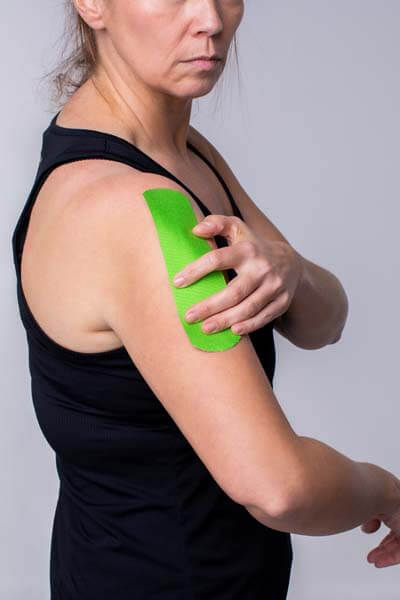
- Stand in front of a mirror and measure the length of the tape strips needed from the centre of the upper arm to the head of the shoulder.
- Cut three I-tapes of equal length.
Applying the tape to your shoulder
Step 1:
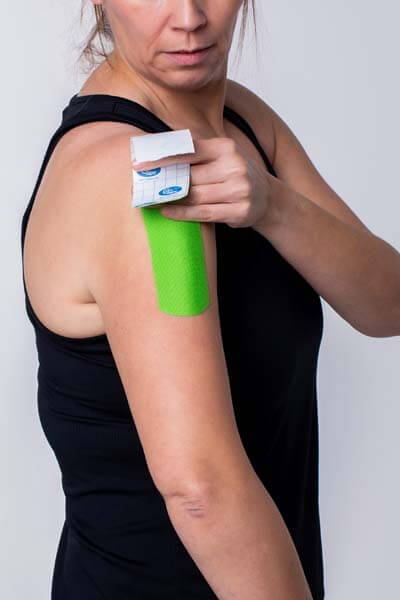
Step 2:
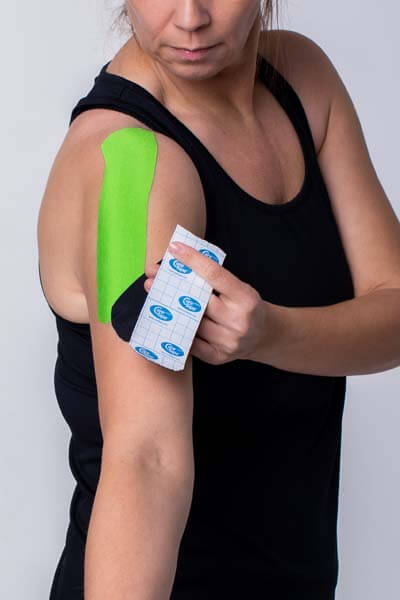
Step 3:
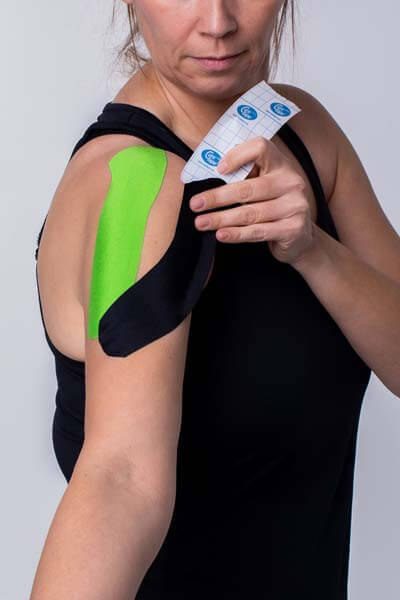
Step 4:
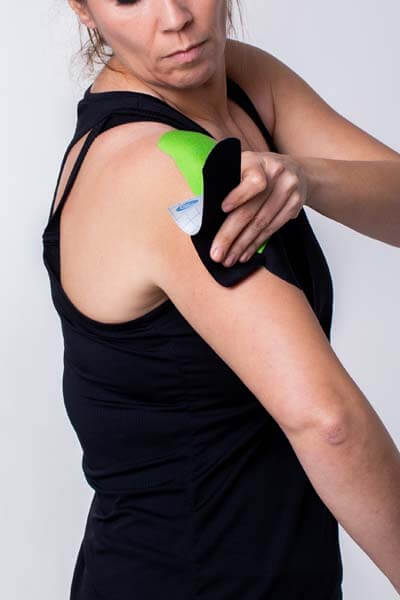
Step 5:
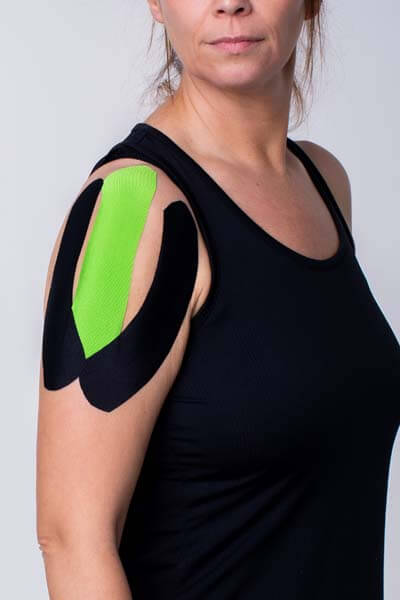
Step 6:
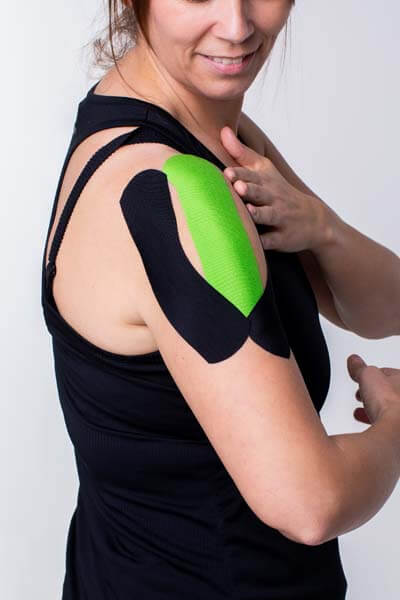
- Start with the middle tape. Without stretching, place the base under the muscle in the middle of the upper arm. Let the arm hang down and apply the tape with a slight stretch towards the head of the shoulder. Attach the anchor to the shoulder.
- Lightly tape the base of the second tape without stretching next to the first tape. Stretch your arm slightly backwards and guide the tape with a slight stretch around the front of the shoulder muscle, fixing the anchor at the top of the shoulder.
- Finally, place the base of the third tape slightly offset next to the other two tapes. Move the arm slightly forwards and guide the tape with a slight stretch over the back of the shoulder muscle, fixing the anchor at the top of the shoulder muscle, and securing the anchor at the top of the shoulder.
- Rub all three tapes well to activate the adhesive layer.
If the illustrated application technique does not relieve the pain, apply the tape in exactly the opposite direction. In the case of painful shoulders, the deltoid is often not injured but simply too weak. Place the base of each of the three tapes at the level of the shoulder head and let the tapes run from top to bottom until the middle of the upper arm. Now you will clearly feel how the shoulder head is pressed towards the socket, and the arm can be lifted more easily. This tape has an activating function, in contrast to the previously described technique, which has a relaxing effect.
Popular products to tape your shoulder
Learn how to tape
- 30 taping instructions for common injuries that taping can help you with
- 176 pages of clear written instructions
- 200 step-by-step instructions accompanied by photo’s, illustrations and scannable video’s through QR codes
What are you waiting for? Order your copy today!
*This book is intended for people who want to tape an injury or complaint themselves. If uncertain about the complaint, consult a physiotherapist.
THYSOL is the manufacturer of the kinesiology tape brand CureTape. As CureTape, we have been training and supplying professionals for almost 25 years. And consumers now know how to find us too! By manufacturing all our tapes in our own factory, we can guarantee the best quality!
Please note that the indicated tape applications and information on our website about the possibilities with kinesiology tape have not yet been scientifically proven. The statements and examples mentioned are based on long-term experiences of patients and trained therapists.
Contraindications not to tape: pregnancy, open wounds, broken bones, unexplained complaints, allergies and skin diseases, use of medication such as blood thinners, thrombosis and fever. Always apply tape in consultation with a specialist.

